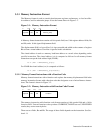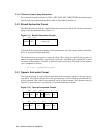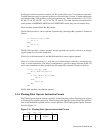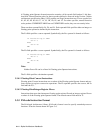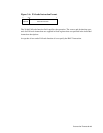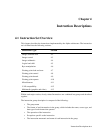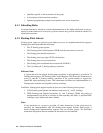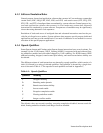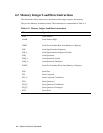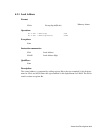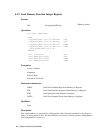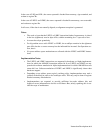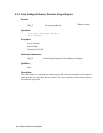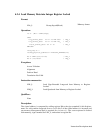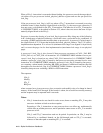
Instruction Descriptions 4–3
4.1.3 Software Emulation Rules
General-purpose layered and application software that executes in User mode may assume that
certain loads (LDL, LDQ, LDF, LDG, LDS, and LDT) and certain stores (STL, STQ, STF,
STG, STL, and STT) of unaligned data are emulated by system software. General-purpose lay-
ered and application software that executes in User mode may assume that subsetted
instructions are emulated by system software. Frequent use of emulation may be significantly
slower than using alternative code sequences.
Emulation of loads and stores of unaligned data and subsetted instructions need not be pro-
vided in privileged access modes. System software that supports special-purpose dedicated
applications need not provide emulation in User mode if emulation is not needed for correct
execution of the special-purpose applications.
4.1.4 Opcode Qualifiers
Some Operate format and Floating-point Operate format instructions have several variants. For
example, for the VAX formats, Add F_floating (ADDF) is supported with and without float-
ing underflow enabled and with either chopped or VAX rounding. For IEEE formats, IEEE
unbiased rounding, chopped, round toward plus infinity, and round toward minus infinity can
be selected.
The different variants of such instructions are denoted by opcode qualifiers, which consist of a
slash (/) followed by a string of selected qualifiers. Each qualifier is denoted by a single char-
acter as shown in Table 4–1. The opcodes for each qualifier are listed in Appendix C.
The default values are normal rounding, exception completion disabled, inexact result dis-
abled, floating underflow disabled, and integer overflow disabled.
Table 4–1: Opcode Qualifiers
Qualifier Meaning
C Chopped rounding
D Rounding mode dynamic
M Round toward minus infinity
I Inexact result enable
S Exception completion enable
U Floating underflow enable
V Integer overflow enable



